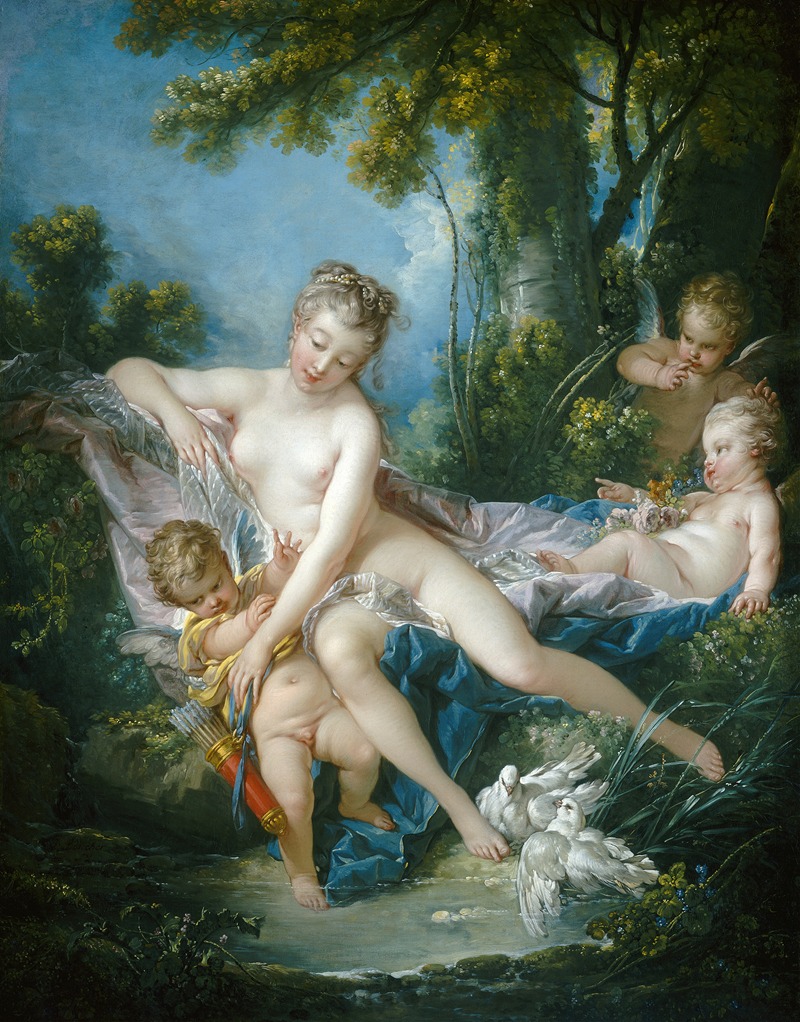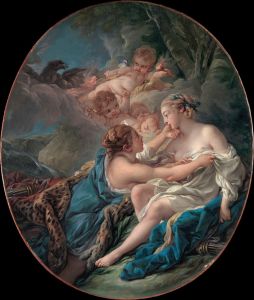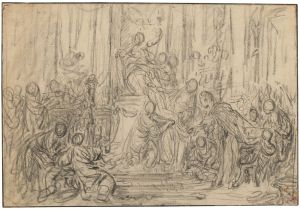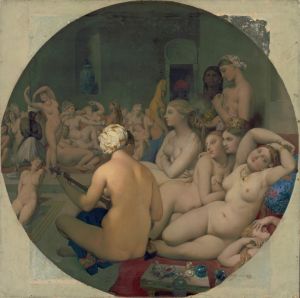
The Bath of Venus
A hand-painted replica of François Boucher’s masterpiece The Bath of Venus, meticulously crafted by professional artists to capture the true essence of the original. Each piece is created with museum-quality canvas and rare mineral pigments, carefully painted by experienced artists with delicate brushstrokes and rich, layered colors to perfectly recreate the texture of the original artwork. Unlike machine-printed reproductions, this hand-painted version brings the painting to life, infused with the artist’s emotions and skill in every stroke. Whether for personal collection or home decoration, it instantly elevates the artistic atmosphere of any space.
"The Bath of Venus" is a painting by the French artist François Boucher, created in 1751. Boucher was a prominent Rococo painter known for his idyllic and voluptuous depictions of classical themes, pastoral scenes, and decorative allegories. His work was highly favored by the French aristocracy and he enjoyed the patronage of Madame de Pompadour, the influential mistress of King Louis XV.
"The Bath of Venus" exemplifies Boucher's mastery of the Rococo style, characterized by its lightness, elegance, and use of soft colors. The painting depicts Venus, the Roman goddess of love and beauty, in a sensual and intimate moment as she prepares to bathe. She is surrounded by a lush, idyllic landscape that includes playful putti (cherubic figures) and a variety of flora, enhancing the painting's romantic and dreamlike quality.
In the composition, Venus is the focal point, positioned centrally and slightly reclining. Her nude form is rendered with delicate, smooth brushstrokes that highlight her soft, glowing skin. The surrounding putti add a sense of movement and playfulness, as they interact with Venus and each other. The background features a serene, natural setting with trees, flowers, and a gently flowing stream, creating a harmonious and tranquil atmosphere.
Boucher's use of color in "The Bath of Venus" is particularly notable. He employs a pastel palette with shades of pink, blue, and green, which contribute to the painting's overall sense of lightness and grace. The artist's attention to detail is evident in the intricate rendering of textures, such as the softness of Venus's skin, the delicate petals of the flowers, and the shimmering surface of the water.
This painting reflects the Rococo era's fascination with themes of love, beauty, and nature, as well as its preference for ornate and decorative art. Boucher's portrayal of Venus is both idealized and intimate, capturing the goddess in a moment of private reverie while also celebrating her divine beauty.
"The Bath of Venus" is housed in the Louvre Museum in Paris, where it continues to be admired for its exquisite craftsmanship and its embodiment of Rococo aesthetics. Boucher's work, including this painting, played a significant role in shaping the visual culture of 18th-century France and remains an important example of the period's artistic achievements.
François Boucher's influence extended beyond his paintings; he was also a prolific designer of tapestries, theater sets, and decorative arts. His legacy is marked by his ability to capture the elegance and frivolity of the Rococo period, making him one of the most celebrated artists of his time. "The Bath of Venus" remains a testament to his skill and his contribution to the art world.


















